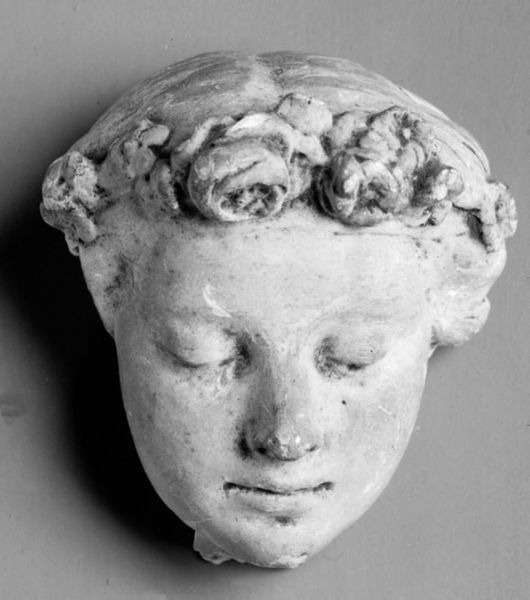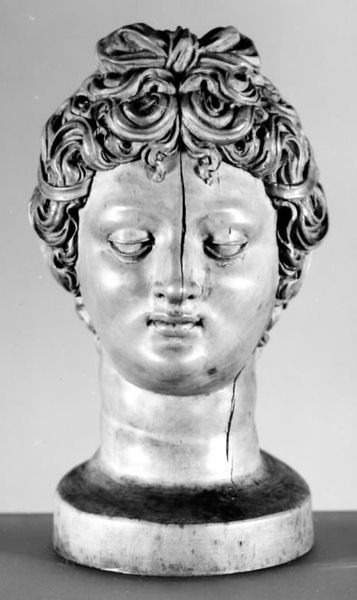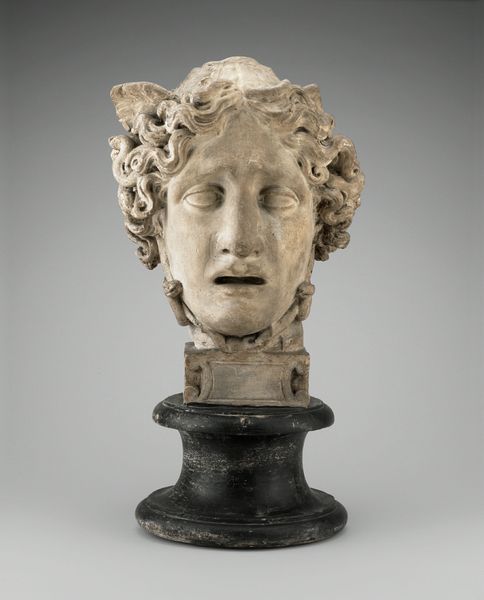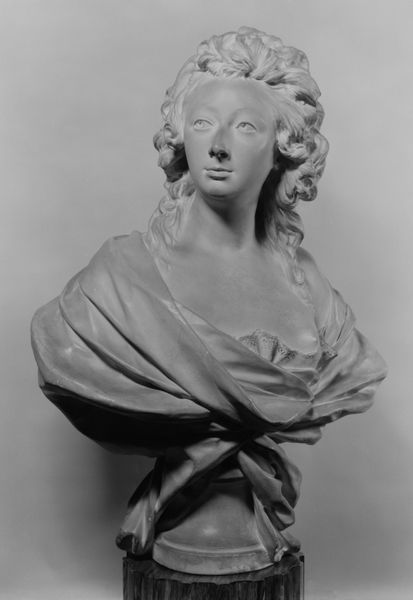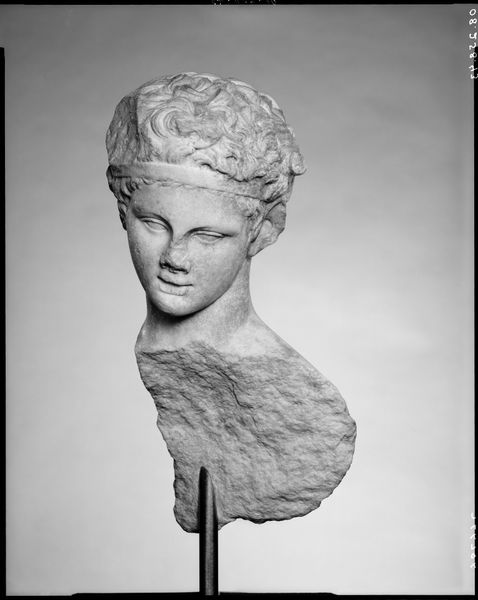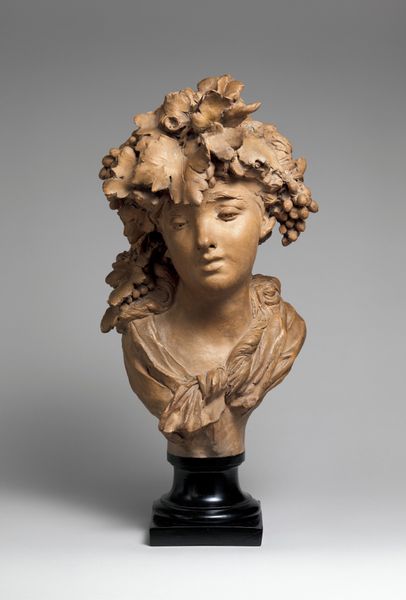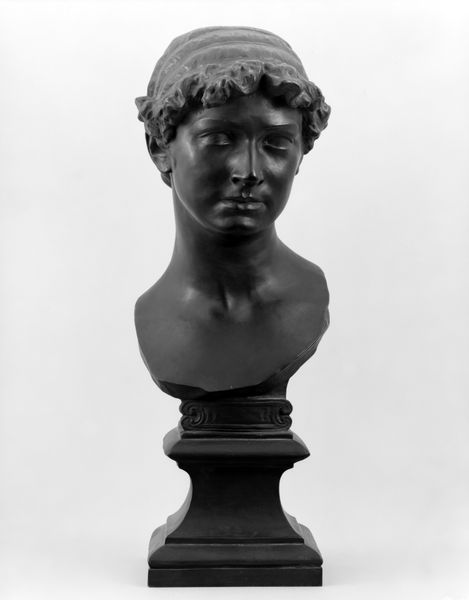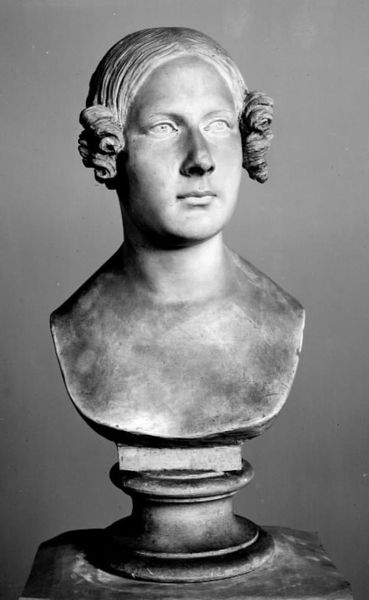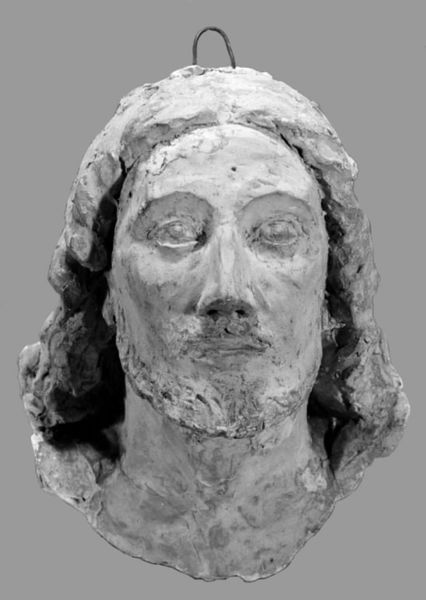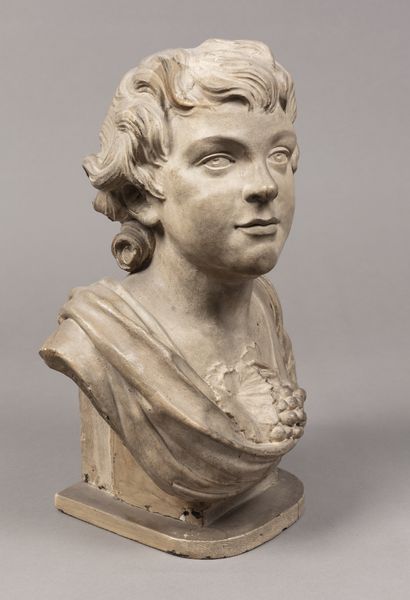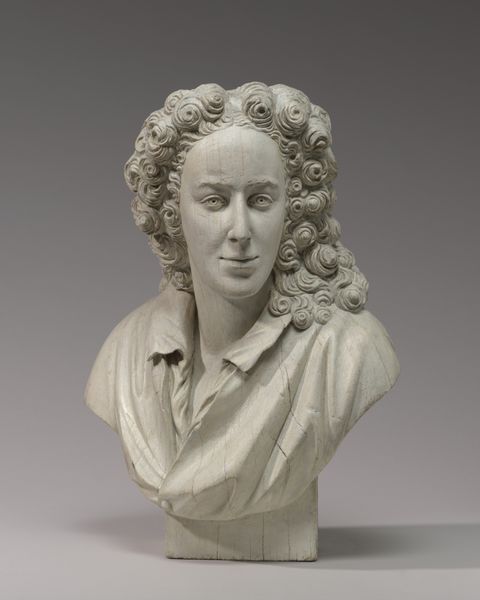
sculpture, marble
#
portrait
#
neoclacissism
#
sculpture
#
classical-realism
#
sculpture
#
black and white
#
marble
#
statue
Dimensions: 30.7 cm (height) (Netto)
Editor: So, here we have "The Spring. Woman with a Wreath of Flowers in her Hair," sculpted in marble by Nicolai Dajon in the 1780s. The sculpture's placid expression gives a very idealized sense of beauty and calm. How would you interpret its symbolism? Curator: This idealized beauty directly echoes classical ideals resurrected during the Neoclassical movement, a yearning for the perceived order and harmony of antiquity. But look closer at the wreath, and the seemingly serene expression of this maiden. The symbols carry multiple layers, not always obvious to us today. Editor: What kind of layers? Curator: Well, what does "spring" traditionally signify? Beyond the obvious renewal in nature? Does the "woman" present any cues to classical archetypes? Editor: Rebirth, growth, a fresh start… And with the flowers, maybe Flora, the Roman goddess of Spring? Curator: Precisely! The work could symbolize fleeting beauty, as flowers bloom and fade. There's often a duality in symbols - life and death, joy and sorrow. What emotional quality emanates from this work in the marble that transcends "Spring"? Editor: Melancholy? Maybe it's because she is in monochrome. Curator: Good point. And could this add to the sculpture's enduring power to stir emotions across centuries? What did you initially assume upon seeing this work for the first time? Editor: I suppose I saw serenity and just assumed the artist was referencing Flora without much critical thought, actually. I appreciate seeing the layers beneath now. Curator: That's the power of art history! Works evolve as we contemplate meaning as they exist through culture.
Comments
No comments
Be the first to comment and join the conversation on the ultimate creative platform.
